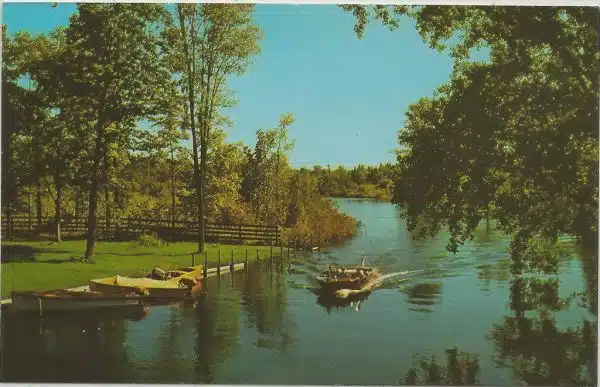Wood is a timeless material that has been used in construction and furniture making for centuries. The natural beauty of wood, with its unique grain patterns and warm colors, adds to the aesthetics of any space. However, new wood can sometimes look too perfect and lack the character of old, weathered wood. This is where the art of distressing comes in.
Distressing is the process of intentionally aging new wood to give it a weathered, rustic appearance. It involves techniques such as sanding, staining, painting, and burning to create dents, scratches, and other imperfections that mimic the effects of time and use. In this article, we will explore some effective methods for distressing new wood and achieving an aged look that adds charm and character to your home or furniture pieces. Whether you are a DIY enthusiast or a professional carpenter looking to provide high-quality restoration services to your clients, these techniques will help you transform new wood into an old treasure.
Understanding The Art Of Distressing
As a wood restoration expert, I understand the art of distressing and aging wood to achieve an old, rustic look. Distressing techniques involve intentionally damaging the surface of the wood to create an aged appearance. You can use a variety of tools such as hammers, nails, chains, and even fire to create the desired effect.
Aging wood methods are another popular way to achieve an antique look. This involves using natural materials such as vinegar or tea mixed with steel wool to make the wood look weathered and worn over time. These methods not only add character but also protect the wood from further damage by sealing it with a protective layer.
Distressing and aging techniques require patience and attention to detail. Each piece of wood is unique and may require different methods depending on its condition and intended use. In the following section, we will discuss how to properly prepare your work area before beginning any distressing or aging process.
Preparing Your Work Area
Before starting any wood restoration project, it is essential to prepare your work area properly. This not only ensures a smooth and efficient process but also helps to protect yourself and your surroundings. The first step is to gather all the necessary protective gear, including gloves, goggles, and masks. This is particularly important when working with chemicals or dust that may cause harm to your eyes or respiratory system.
The next step is to clear out the workspace and remove any objects that might get in the way of the restoration process. This includes furniture or other items that could be damaged by the cleaning supplies used during the project. It’s also a good idea to cover nearby surfaces with plastic sheeting or drop cloths to prevent damage from spills or drips.
Once you have prepared your work area, it’s time to gather all the necessary cleaning supplies. Depending on the type of wood you are working with, different cleaning products may be required. For example, if you’re restoring an old piece of furniture made from oak or pine, a mild soap solution may be sufficient for removing dirt and grime buildup. On the other hand, hardwoods such as teak or cherry may require specialized wood cleaners and conditioners to achieve optimal results.
Preparing your work area is an important first step in any wood restoration project. By taking proper precautions and gathering all necessary supplies beforehand, you can ensure a safe and efficient process. In the next section, we will discuss how choosing the right type of wood can affect your restoration project’s outcome.
Choosing The Right Type Of Wood
Recent studies have shown that the type of wood used in a project can significantly affect its overall appearance and durability. Choosing the right type of wood is crucial to achieve the desired effect when trying to make new wood look old. Certain types of wood are more suited for distressing and staining than others, so it’s important to do your research before making a purchase.
When selecting wood for a distressed finish, consider using softwoods such as pine or cedar. These woods have a natural grain pattern that responds well to distressing techniques like sanding, scraping, or burning. Additionally, they are less dense than hardwoods, making them easier to work with and stain. Other popular options include reclaimed barnwood or salvage lumber from older buildings.
Once you have selected your preferred type of wood, it’s time to begin the staining process. To ensure an authentic-looking distressed finish, use multiple layers of stain in varying shades. Start with a lighter shade as a base coat and gradually build up with darker colors until you achieve the desired effect. Remember to always follow the manufacturer’s instructions and test your stains on a scrap piece of wood before applying them to your project.
To achieve the perfect distressed look for your project, choosing the right type of wood is just one piece of the puzzle. In the next section, we will discuss sanding techniques for distressing that will help bring out the natural beauty of your chosen wood while giving it an aged appearance.
Sanding Techniques For Distressing
After selecting the right type of wood, it is time to move on to the next step, which is making new wood look old. This process is called distressing, and it involves creating the appearance of weathered wood by simulating natural wear and tear. There are several methods for achieving this look, including using sandpaper, vinegar, steel wool, coffee grounds, and more.
Distressing without sandpaper is a popular technique that involves using various household items to create marks on the wood. For instance, you can use a hammer and nails to create dents or scratches on the surface of the wood. You can also use a wire brush or a metal file to scrape away some of the softwood fibers to create a textured appearance. Another technique that works well in creating an aged patina on new wood is exposing it to sunlight for extended periods.
Achieving a weathered look requires patience and attention to detail. It’s essential to experiment with different methods until you find one that works best for your project. Keep in mind that distressing should be done carefully as too much force might damage the wood beyond repair. The goal is not just to make new wood look old but also to create character and depth that will enhance its beauty for years to come. In the next section, we will discuss sanding techniques for distressing further and how they can be used in combination with other methods mentioned above for optimal results in creating dents and scratches.
Creating Dents And Scratches
There is a common misconception that creating realistic dents and scratches on wood is simply a matter of hitting it with various tools or objects. While this may produce some surface-level imperfections, the art of intentional scratches requires a more nuanced approach. The goal is to replicate the natural wear and tear that occurs over time, rather than simply damaging the wood.
To create dents, start by selecting an object with a rounded end, such as a ball-peen hammer or the back of a screwdriver. Place the object against the wood and gently tap it until a small indentation forms. Repeat this process in several areas, varying the pressure and angle of the tool to create different sizes and shapes of dents. For scratches, use a sharp blade or sandpaper to lightly graze the surface of the wood in long strokes, following the grain pattern.
The key to creating convincing dents and scratches is to avoid making them too uniform or symmetrical. Natural wear patterns are irregular and random, so strive for an organic look rather than trying to replicate specific patterns or designs. With practice, you can achieve a convincing aged appearance that will add character and charm to any piece of new wood furniture.
Transition: Now that you’ve mastered creating realistic dents and scratches on your new wood piece, let’s move on to using stains and paints for an aged look without damaging its structure.
Using Stains And Paints For An Aged Look
Color techniques are a great way to make new wood look old. One popular method is to use stains or paint to create a patina that mimics the natural aging of wood. To achieve this, start by choosing the appropriate colors that match with the desired aged appearance. Darker colors such as brown or grey can add depth, while lighter shades like white or cream can provide a weathered look.
Natural aging methods such as water and vinegar solutions can also be used in conjunction with color techniques. Applying a solution of water and vinegar to new wood can help create an aged appearance by darkening the grain and highlighting knots. This method works best on lighter woods such as pine and oak, but it’s important to test on a small area first to ensure it creates the intended effect.
To achieve an authentic aged look, consider incorporating multiple color techniques and natural aging methods. For instance, applying a coat of paint followed by sanding or distressing can create a worn-down appearance, while using wax or glaze over stained wood can give it an antique finish. Remember that experimentation is key when trying out different methods, so don’t be afraid to try out various combinations until you find what works best for your project.
Now that we’ve covered using stains and paints for an aged look, let’s move on to exploring how to apply a patina finish for even more depth and texture.
Applying A Patina Finish
Once the wood has been prepared for staining, it is time to add a patina finish to create an aged appearance. There are various techniques you can use to achieve this effect, including using different stains and paints in layers or distressing the wood with sandpaper or a wire brush. One popular technique is using vinegar and steel wool to create a chemical reaction that darkens the wood.
To apply the patina finish, you will need some basic tools such as gloves, a paintbrush, and rags. If you are using a stain or paint, apply it with the brush in long strokes following the grain of the wood. To further enhance the aged look, use a dry brush or rag to remove excess stain or paint in areas where natural wear and tear would occur over time.
Another option is using wax or glaze to give the wood an antique appearance. Apply these products with a rag or brush and then wipe away any excess with a clean cloth. This will allow some of the natural wood grain to show through while still giving it an aged look.
Applying a patina finish is just one way to transform new wood into something that looks old and rustic. In the next section, we will explore how to create a faux barn wood look using different techniques and materials.
Creating A Faux Barn Wood Look
After applying a patina finish to your wood, you may want to take it a step further and create a DIY weathered finish for a more rustic look. This is one of the most popular rustic home decor ideas that can bring character to any space. It’s easy to achieve by distressing new wood and making it look old.
To make new wood look old, start by sanding down the edges and corners of the wood with sandpaper. This will give it a worn, uneven look. You can also use a hammer or other tools to create dents and scratches on the surface of the wood. Another technique is to stain the wood with darker shades in order to give an aged appearance.
Here are some tips for creating a faux barn wood look:
- Use different stain colors: Mix together various shades of stains or paints with water to dilute them and brush onto your wood.
- Apply vinegar: Soak steel wool in vinegar and let sit overnight. Brush onto your wood and let dry before applying stain.
- Use tea or coffee: Brew strong tea or coffee and brush onto your wood for a natural-looking aged effect.
- Distress with chains: Wrap chains around your wood and hit them with a hammer for an authentic distressed look.
- Sand unevenly: Sand some areas more than others, focusing on edges and corners.
By using these techniques, you can create a unique weathered finish that adds character to your space. In the next section, we’ll explore another method for distressing wood – using fire.
Using Fire To Distress Wood
One effective way of making new wood look old is by using fire to distress it. This method involves scorching the wood surface with a propane torch or open flame, creating burn marks and deepening the grain patterns. The charred areas can then be further enhanced by brushing them with a wire brush to remove any loose ash and create more texture.
Using chemicals is another way of distressing wood. This method involves applying a mixture of vinegar and steel wool to the wood surface, which reacts with the natural tannins in the wood and creates an aged, weathered look. Alternatively, you can use commercial wood aging solutions that are specifically designed for this purpose.
Distressing wood with water is a technique that involves soaking the wood surface in water to make it more pliable, then using tools like hammers and chains to dent and damage it. This method mimics the effects of weathering, as water exposure can cause cracks, warping, and discoloration over time. Once the desired level of distress has been achieved, you can seal the wood to protect it from further damage.
To add rustic hardware and accents to your distressed wood project, there are several options available. You can use vintage drawer pulls or knobs for cabinets and furniture pieces, or incorporate wrought iron or brass hinges for doors and gates. Repurposing old metal objects like horseshoes or gears can also add a unique touch to your project. By combining these elements with your distressed wood surfaces, you can create a truly authentic rustic look that adds character and charm to any space without sacrificing functionality or durability.
Adding Rustic Hardware And Accents
Rustic hardware can add a touch of authenticity to any wooden piece, making it look like it has been around for decades. Adding hardware is not only functional but also an opportunity to highlight the beauty of the woodwork. There are many rustic hardware options available in the market, such as wrought iron handles, hinges, and latches.
Using natural elements such as stones, branches, and dried flowers can also enhance the rustic look of your wooden piece. These elements not only add texture but also bring a touch of nature indoors. Incorporating these natural accents into your design can make your space feel warm and inviting.
When adding hardware or natural elements to your wooden piece, it’s essential to keep in mind the balance between functionality and aesthetics. If you’re using multiple accents, make sure they complement each other rather than clash. Also, consider the size and placement of each element carefully to ensure that it doesn’t overpower the overall design.
Incorporating rustic hardware and natural elements is just one step in creating a reclaimed wood look. The next section will delve deeper into how to use stains, paints and distressing techniques to age new wood effectively.
Creating A Reclaimed Wood Look
The addition of rustic hardware and accents is a fantastic way to add character and charm to new wood furniture. However, if you want the furniture to look entirely reclaimed, then you’ll need to create a distressed look on the surface of the wood. There are several DIY distressing methods that you can use to achieve this effect, including using a hammer or chain to create dents and scratches.
Another effective approach for making new wood look old is by using reclaimed wood. Reclaimed wood is typically repurposed from old buildings such as barns or factories, which means it has already been exposed to years of wear and tear. This type of wood can be used as an accent piece, or it can be used as the primary material for your project.
If neither of these options works for your project, there’s another technique that you can try: using vinegar and steel wool. By soaking steel wool in vinegar overnight and then applying it to the surface of the wood with a brush, you can create an aged effect that resembles weathered barn boards. This method is straightforward and inexpensive, making it an excellent option for those who want to achieve a reclaimed look without breaking the bank.
Using Vinegar And Steel Wool
The combination of vinegar and steel wool is a common technique used to age wood, as the resulting mixture is acidic enough to strip away the wood’s surface. To create the mixture, vinegar should be poured into a bowl or container and steel wool added to the vinegar until it begins to dissolve. Next, the mixture should be applied to the wood surface with a brush or cloth and left to sit for at least 10 minutes before being wiped away with a clean cloth. Finally, the wood should be wiped down with a damp cloth to remove any remaining residue.
Mixing Vinegar And Steel Wool
If you’re looking for DIY alternatives to achieving a natural aging look on new wood, then mixing vinegar and steel wool might just be the solution you’re searching for. As a wood restoration expert, I can attest that this method has been tried and tested over time, producing stunning results that mimic the effects of weathering and aging on wooden surfaces. The best part? It’s cheap, easy to do, and requires only a few basic materials.
To start with, you’ll need to prepare your materials – a jar or container with a lid, vinegar (white or apple cider), steel wool pads (make sure they’re uncoated), and a paintbrush. Cut the steel wool pads into small pieces and place them in the jar before pouring enough vinegar to cover them completely. Close the lid tightly and let it sit for at least 24 hours. Then, using a paintbrush, apply the mixture onto your new wood surface in even strokes. You’ll notice that as it dries, it will gradually darken the wood and create an aged effect.
One thing to keep in mind when using this method is that different types of wood react differently to vinegar and steel wool mixtures. It’s always advisable to test it out on a small area first before applying it onto larger surfaces. Additionally, if you want more control over how dark or light the aged effect is, you can dilute the mixture with water or adjust the amount of steel wool used. With these tips in mind, you’ll be able to achieve an authentic-looking aged finish without breaking the bank or relying on harsh chemicals.
Applying Mixture To Wood
Now that you have successfully mixed vinegar and steel wool to create an aged effect on new wood, the next step is to apply it onto the surface. Applying the mixture requires careful consideration and mixing techniques to achieve a consistent and even finish. As a wood restoration expert, I would recommend using a paintbrush to apply the solution as it allows for greater control over the amount of mixture applied.
When applying varnish, it’s essential to ensure that the surface is clean and free from any dust or debris. Before you start painting, lightly sand the surface with fine-grit sandpaper to create a smooth surface for the varnish to adhere to. Once you’ve done this, use your paintbrush to apply an even coat of the vinegar and steel wool mixture in long strokes following the grain of the wood. It’s important not to overload your brush with too much solution as this can cause drips and unevenness.
Once you’ve applied one coat of the mixture, let it dry completely before applying subsequent coats until you achieve your desired level of aging. Remember that different types of wood react differently to this method, so be sure to test it out on a small area first before committing to larger surfaces. With these tips in mind, applying vinegar and steel wool mixture onto your new wood will be a breeze, allowing you to achieve an authentic-looking aged finish without harsh chemicals or breaking the bank.
Distressing Wood With A Wire Brush
Wire brush techniques can be used to distress wood and achieve a weathered look. This technique involves using a wire brush to scrape the surface of the wood to create small grooves and scratches that mimic the effect of aging. The wire brush removes softer parts of the wood, leaving behind a rougher texture that looks aged.
When using a wire brush, it is important to use long, even strokes along the grain of the wood to create a natural-looking effect. It is also important to vary the pressure applied to the brush and use different types of brushes with varying degrees of stiffness. This will help create a more varied texture on the surface of the wood, which will make it look more authentic.
Overall, wire brush techniques are an effective way to make new wood look old. By carefully selecting your tools and varying your technique, you can achieve a variety of weathered looks that will add character and depth to any piece of furniture or home decor project.
Transition: Now that we’ve covered how to distress wood with a wire brush, let’s move on to another technique for creating an aged appearance: creating a vintage look with milk paint.
Creating A Vintage Look With Milk Paint
- Preparing the wood for a vintage look with milk paint is an essential step as it will ensure that the paint adheres properly and creates the desired effect.
- Sanding the wood surface with 180-220 grit sandpaper will create a smooth surface to which the paint will adhere.
- Applying the milk paint requires multiple coats, with each coat taking approximately 30 minutes to dry.
- The number of coats of paint will depend on the desired look, with more coats creating a darker, richer hue.
- Finishing the look with a wax or sealant will help to protect the paint and give the wood a vintage look.
- Applying additional coats of paint, sanding, and waxing or sealing can be repeated as often as desired to achieve the desired effect.
Preparing The Wood
To achieve a vintage look with milk paint, it is essential to prepare the wood surface properly. The first step is to determine the type of wood you are working with and its condition. It is important to note that different types of wood require different sandpaper types. For instance, softwoods like pine or cedar need finer grit sandpapers, while hardwoods such as oak or maple can handle coarser grits.
Once you have determined the type of wood and selected the appropriate sandpaper, the next step is to remove any existing finish on the wood surface. This process involves using a coarse-grit sandpaper followed by a medium-grit one for a smooth finish. The goal here is to get rid of any imperfections or scratches that might prevent the milk paint from adhering correctly.
After removing any existing finish on the wood surface, give it a thorough cleaning to remove dust and debris using a damp cloth or vacuum cleaner. If there are any cracks or gaps in the wood, use a wood filler to fill them up before proceeding with painting. Preparing your wood surface in this manner ensures that your milk paint adheres well and gives your project an authentic vintage look without appearing artificial or forced.
Applying Milk Paint
Now that the wood surface has been properly prepared, it is time to move on to the next step of creating a vintage look with milk paint – applying the paint. Milk paint comes in various color options, from muted earth tones to vibrant primary colors, making it easy to achieve a vintage look that matches your aesthetic preferences.
When applying milk paint, there are several techniques for layering that can help create depth and texture, adding to the overall vintage feel. One popular technique is called “chippy” or “crackled” finish, where layers of different colored paints are applied and then sanded down in specific areas to reveal the layers underneath. This gives a weathered and distressed appearance that is characteristic of vintage pieces.
Another technique involves using multiple colors of milk paint and layering them in a way that mimics natural wear and tear. This approach involves using sandpaper or a scraper tool to remove some of the top layers of paint, revealing different colors underneath. By experimenting with these techniques for layering, you can create a unique vintage look that adds character and charm to any piece of furniture or decor item.
Finishing The Look
After applying the milk paint and achieving the desired layering technique, the next step in creating a vintage look is finishing the piece. This involves using DIY distressing and antiquing techniques to create an aged appearance that complements the color and texture of the milk paint.
One popular method for distressing furniture is sanding. By lightly sanding certain areas of the piece, such as edges or corners, you can create a worn-down effect that mimics natural wear and tear. Another option is to use a scraper tool to remove small sections of paint, revealing the wood grain underneath. This creates an authentic vintage look that adds character and charm to any piece.
Once you have achieved your desired level of distressing, it’s time to apply an antiquing glaze or wax. This step enhances the depth and texture of the piece by adding subtle highlights to low-lying areas, such as carvings or crevices. The result is a beautifully aged appearance that looks like it has been passed down through generations. With these finishing touches, your milk paint project will be transformed into a stunning vintage masterpiece that will be cherished for years to come.
Protecting Your Distressed Wood Pieces
Once you have successfully achieved the distressed look on your new wood piece, it is important to protect it from further damage. There are several protecting techniques that can be employed to ensure that your distressed wood piece lasts for a long time.
Firstly, consider applying a clear coat of polyurethane to the surface of the wood. This will help to seal in the color and texture of the distressed finish while also providing protection against moisture and fading. It is important to note that applying too many coats of polyurethane may lead to a glossy finish, which might not be desired for a rustic or aged look.
Secondly, avoid exposing your distressed wood piece to direct sunlight or extreme temperatures. Direct sunlight can cause the color of the wood to fade over time, while extreme temperatures can cause warping or cracking. If possible, try to keep your distressed wood pieces indoors, away from direct sunlight and in temperature-controlled environments.
Lastly, regular maintenance tips such as cleaning with a soft cloth and mild soap solution can remove any dirt or grime buildup on the surface of your distressed piece. Avoid using harsh chemicals or abrasive cleaners as these may damage the finish of your piece. With proper care and maintenance, your distressed wood pieces will provide years of aesthetic appeal and functionality.
- Protecting techniques: Apply clear coat of polyurethane; avoid exposure to direct sunlight or extreme temperatures.
- Maintenance tips: Clean with a soft cloth and mild soap solution; avoid harsh chemicals or abrasive cleaners.
Remember that distressing new wood takes effort and patience but protecting it takes even greater effort. By following these simple steps for protecting techniques and maintenance tips, you can ensure that your new piece looks old for years to come without losing its appeal!
Conclusion
The art of distressing wood is a skill that has been used for centuries to create unique and beautiful pieces of furniture. By following the steps outlined in this article, you too can learn how to make new wood look old and create your own vintage masterpieces.
To begin, it is important to understand the techniques involved in distressing wood. This includes sanding, denting, scratching, and using vinegar and steel wool. Each technique requires careful attention to detail and a steady hand to achieve the desired effect.
Once you have mastered these techniques, you can experiment with different types of wood and finishes to create a truly unique piece. Whether you are looking to create a rustic farmhouse table or a vintage-inspired bookshelf, the possibilities are endless when it comes to distressing wood.
In conclusion, the art of distressing wood is not only a practical skill but also an art form that allows you to express your creativity and imagination. By following these simple steps and practicing your technique, you can transform any piece of new wood into a beautiful vintage masterpiece that will stand the test of time. So go ahead, grab your sander and let your creative juices flow as you embark on this exciting journey into the world of distressed wood restoration!
Image Credits
- “NW Bellaire MI 1950s Old Wood Speedboat on Intermediate River looking to Lake Bellaire in Antrim County Scene Photo taken at County Road 620” by UpNorth Memories – Don Harrison (featured)





























